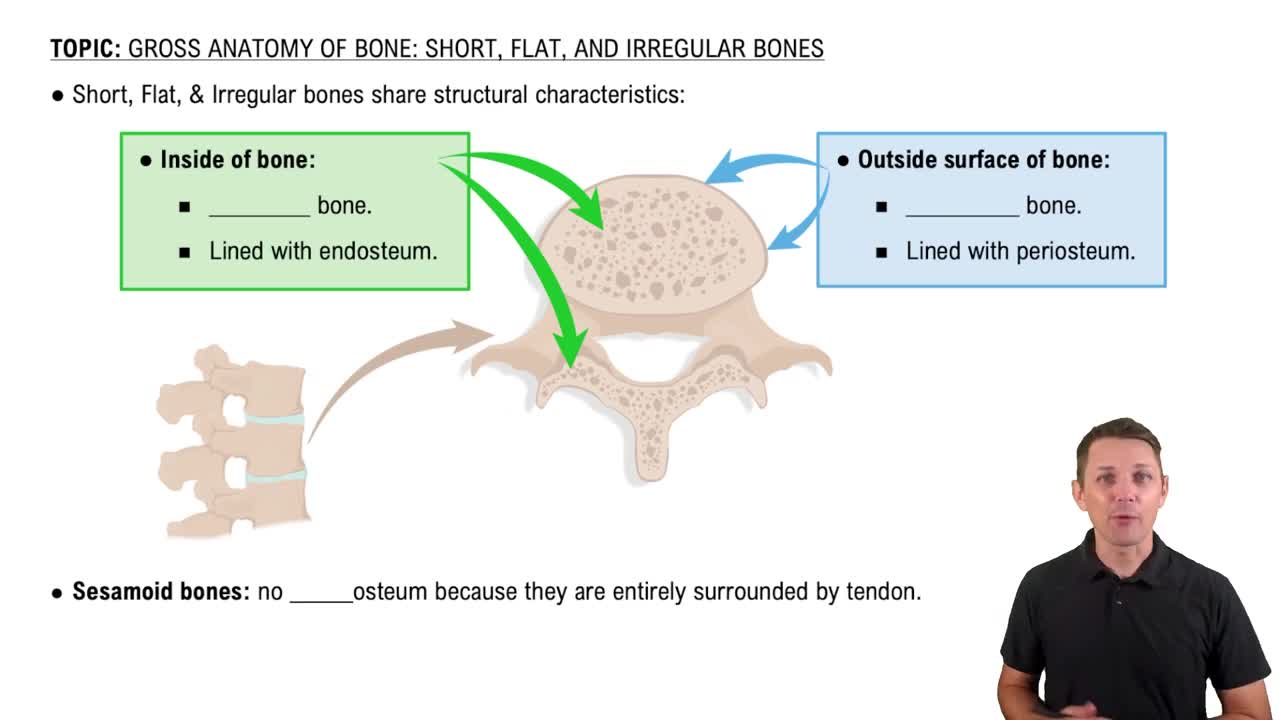Bone Classification
Bones can be classified into four main shapes: long, short, flat, and irregular. Long bones, such as the femur, are characterized by a greater length than width and are primarily involved in movement. Short bones, like the carpals, are roughly cube-shaped and provide stability and support. Flat bones, such as the skull, serve protective functions, while irregular bones, like the vertebrae, have complex shapes that fulfill various roles.
Recommended video:
Structural Joint Classifications
Long Bones
Long bones are elongated structures that are crucial for movement and support. They consist of a diaphysis (shaft) and epiphyses (ends), and they contain a medullary cavity filled with bone marrow. Examples include the humerus and tibia. Their design allows for leverage and weight-bearing, making them essential in the skeletal system.
Recommended video:
Flat Bones
Flat bones are thin, flattened structures that provide protection to underlying organs and serve as attachment points for muscles. They are typically composed of two layers of compact bone surrounding a layer of spongy bone. Examples include the sternum and ribs. Their shape allows them to cover and shield vital areas, such as the brain and thoracic cavity.
Recommended video:
Short, Flat, and Irregular Bones
 Verified step by step guidance
Verified step by step guidance Verified Solution
Verified Solution



 2:58m
2:58m